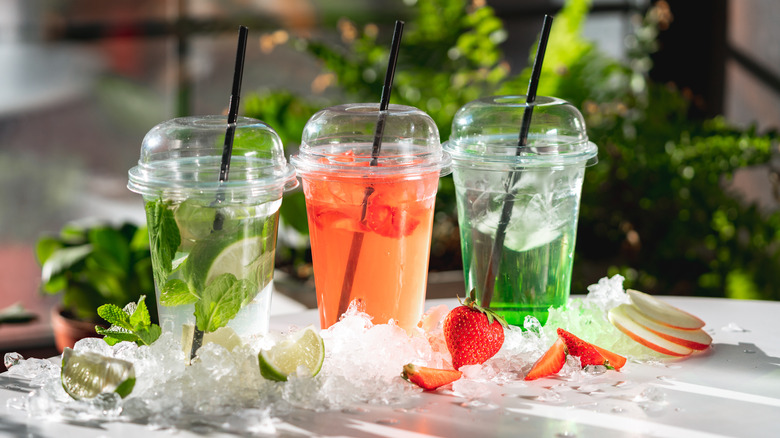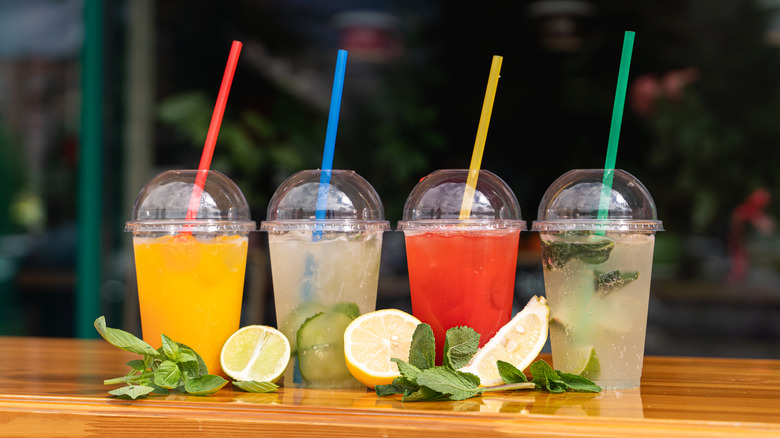To-Go Cocktails Are Coming Back To NYC, But There's A Big Catch
If you quarantined in New York City sometime between March and June of 2020, chances are you ordered delivery or takeout at least once — and may have even treated yourself to a to-go cocktail. The boozy option became available March 16, Eater reports, when the governor at the time, Andrew Cuomo, temporarily amended the State Liquor Authority rules to allow restaurants to distribute alcoholic beverages for takeout and delivery. Though Governor Cuomo had granted two extensions to the temporary legalization, it ultimately expired on June 27 of the same year.
As of April 2022, however, it'll be making a more long-term comeback, NBC New York shares. Following through with the promise she made back in January during her 2022 State of the State address, New York Governor Kathy Hochul has now officially signed off on the reinstatement of the takeout alcohol law, explaining that it offers another lifeline to struggling restaurants that have not yet been able to financially recover from the pandemic. This one will be put in place for three years, but because it's not considered an emergency regulation, it will have to go through the legislative process before it takes effect.
Restaurants and customers must abide by two stipulations
Along with reinstating the takeout alcohol law, Governor Kathy Hochul has also reinstated former governor Andrew Cuomo's rule that customers must purchase a "substantial food item" alongside their drink, New York Post reports. But to prevent another "Cuomo chips" situation — where restaurants would sell candy, snacks, and "Cuomo chips" to bypass Cuomo's rule — the State Liquor Authority issued an advisory, warning that "Obvious efforts to circumvent the law for example an unreasonably small portion of soup, a serving of canned beans, a handful of lettuce, or charging a small extra fee for an alcoholic beverage in lieu of a food item not actually ordered or delivery will be treated as a violation of the law."
The State Liquor Authority also established that in order to avoid creating a competitive market for liquor stores, restaurant owners cannot sell alcohol by the bottle or can. As is the case for substantial food items, clever attempts to work around the rule by transferring a full bottle of wine or liquor into another container are considered violations. If restaurants want to offer the option of alcohol to-go to their customers, both sides will have to abide by the extra set of rules.

